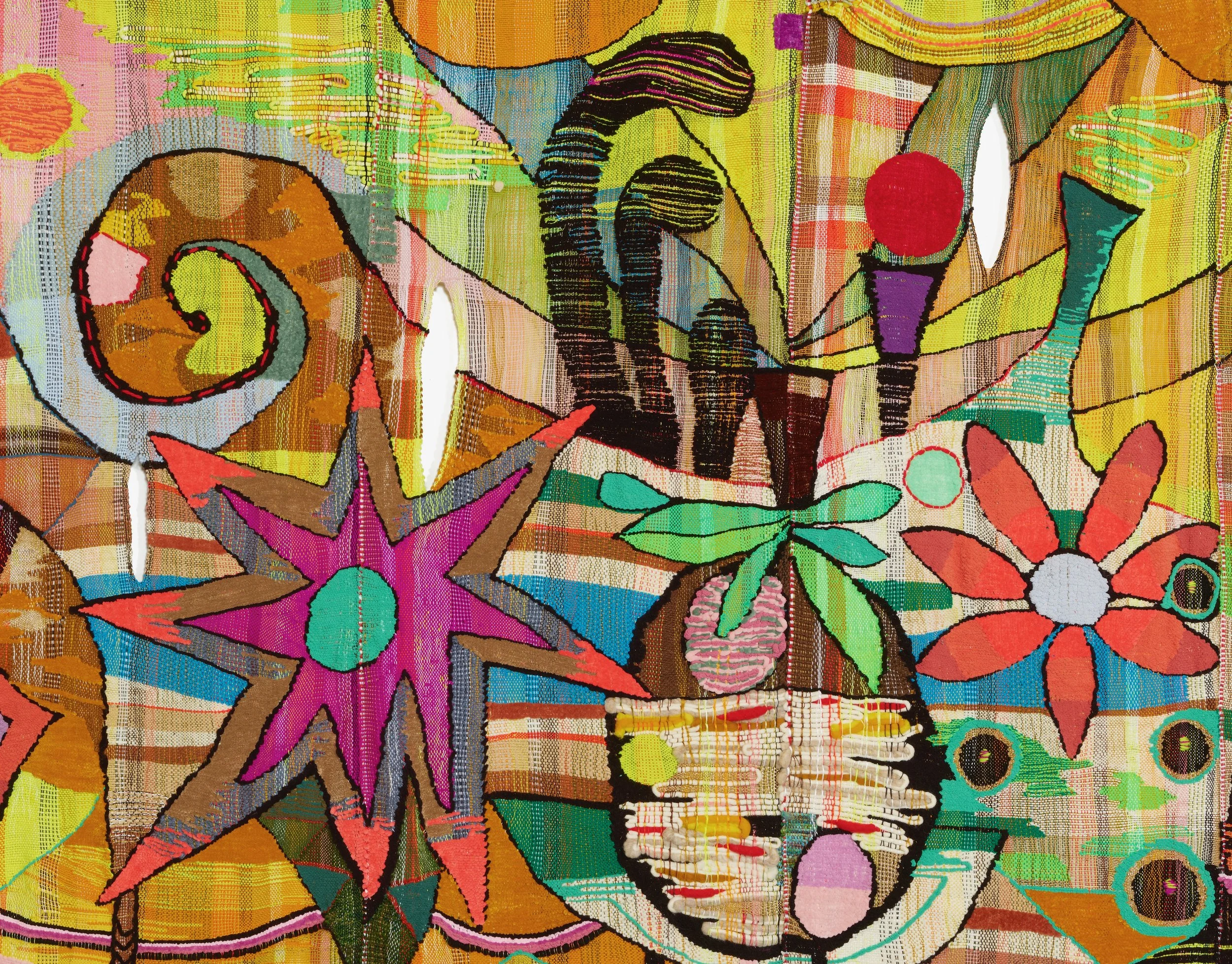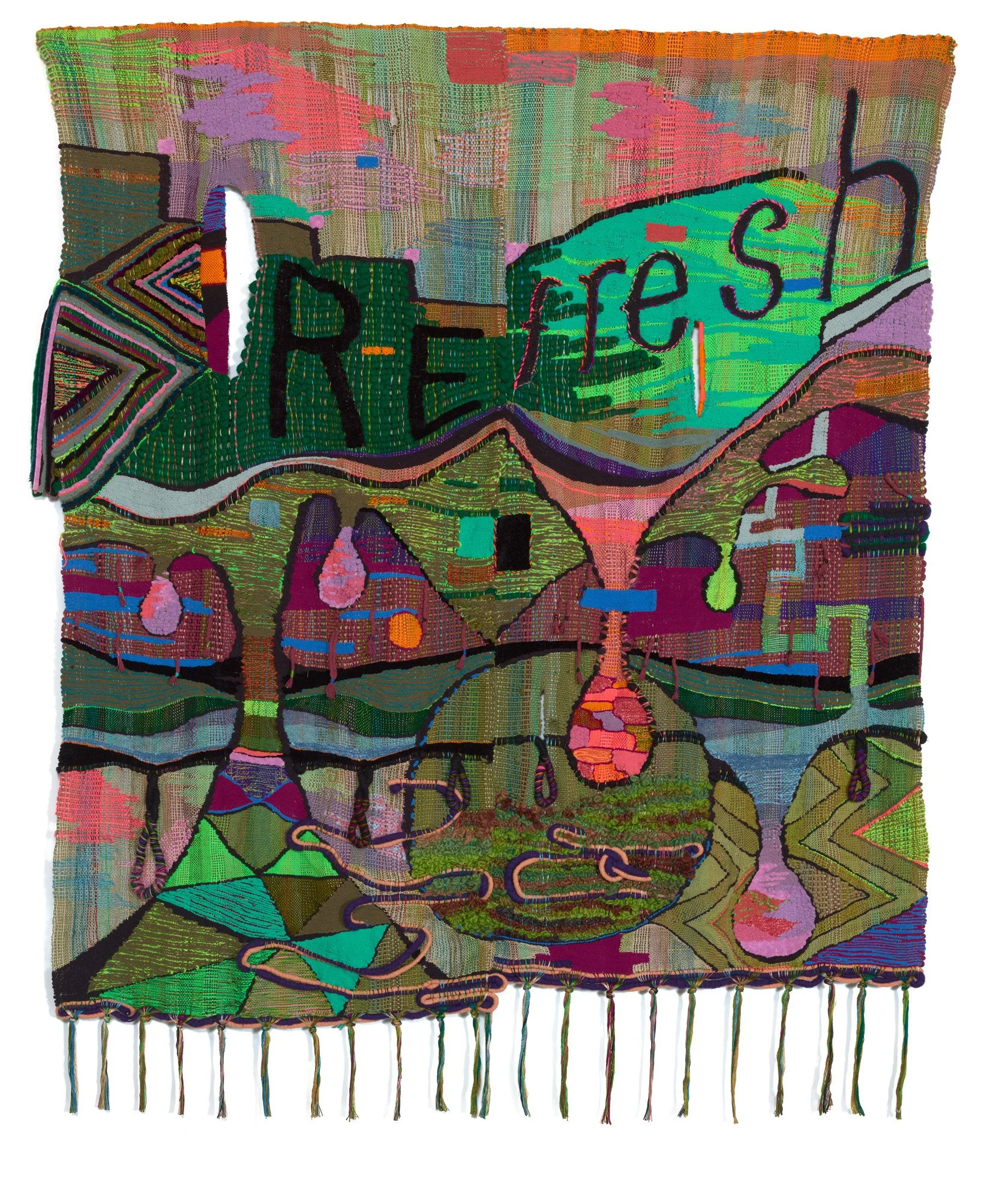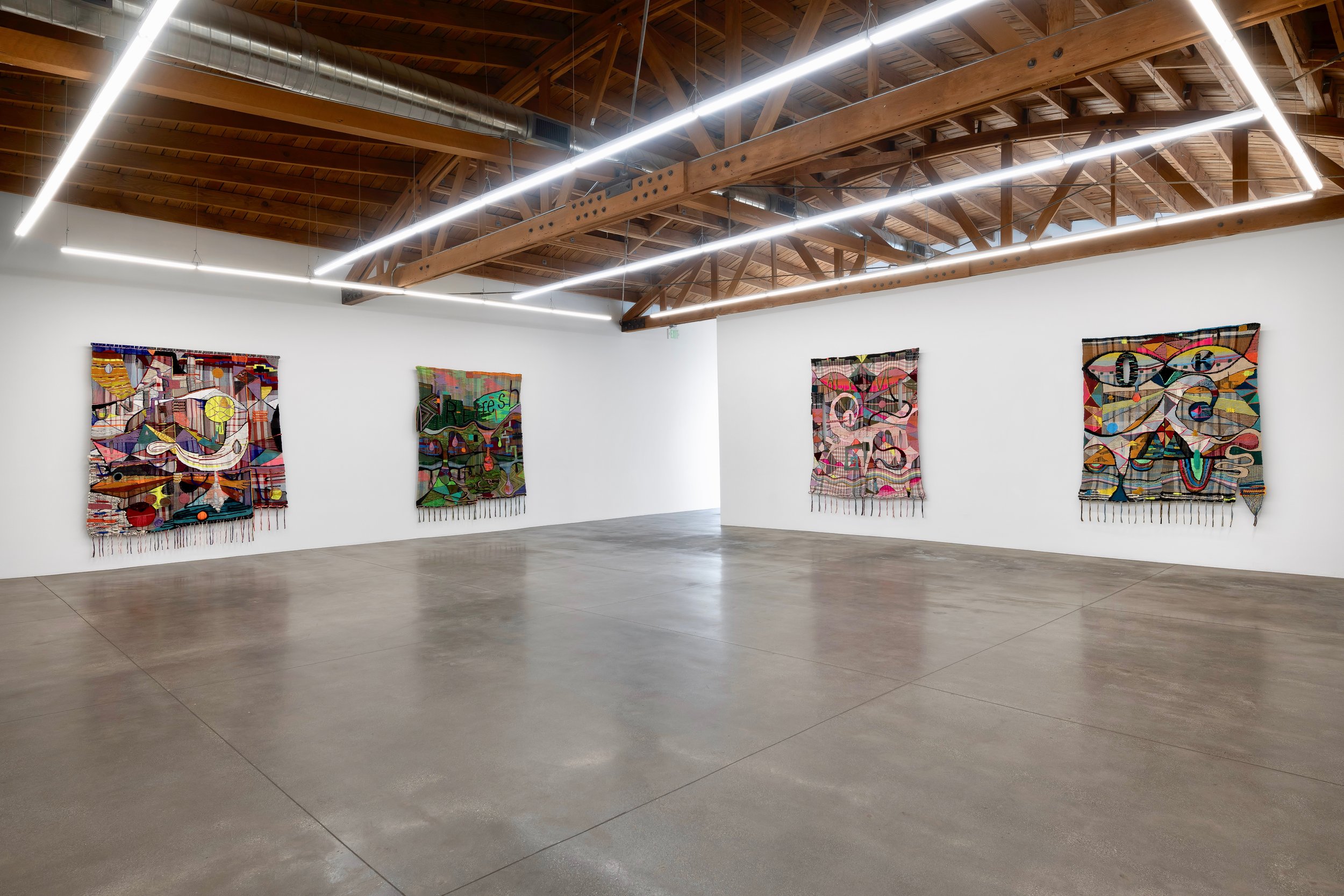Tomorrow is just a thought, Shoshana Wayne Gallery, Los Angeles, CA. September 23 - November 22, 2023
What can go right, 2023, 100” x 156”, wool, cotton, acrylic, hemp, metallic, chenille fibers.
Yes. Yes. 2022, 78” x 95”, wool, cotton, acrylic, hemp, metallic, chenille fibers.
There isn’t a someday, 2022, 98” x 85, wool, cotton, acrylic, hemp, metallic, chenille fibers.
RE-fresh, 2022, 95” x 78”, wool, cotton, acrylic, hemp, chenille fibers.
I prefer nonfiction, 2021, 93” x 72”, wool, cotton, acrylic, hemp, chenille fibers.
Sometimes OK is good enough, 2022, 84” x 70”, wool, cotton, acrylic, hemp, metallic, chenille fibers.
HEAL, 2022, 48” X 60”, wool, cotton, acrylic, chenille fibers.
Elevated States of Emotion
Sanguine, 2023, Cotton, Acrylic, wool, chenille, metallic fibers, stained glass, 22” x 22”
Conjoined, 2023, Cotton, Acrylic, wool, chenille, metallic fibers, stained glass, 22” x 22”
Atonal, 2023, Cotton, Acrylic, wool, chenille, metallic fibers, 22” x 22”
Choleric, 2023, Cotton, Acrylic, wool, chenille, metallic fibers, 22” x 22”
Homesick, 2023, Cotton, Acrylic, wool, chenille, metallic fibers, stained glass, 22” x 22”
Ditto, 2023, Cotton, Acrylic, wool, chenille, metallic fibers, 22” x 22”
Whoa, 2023, Cotton, Acrylic, wool, chenille, metallic fibers, stained glass, 22” x 22”
Tomorrow is just a thought
We are so attached to our future narratives that we convince ourselves they are true. I am heartened and humbled by how inaccurate my own fortune-telling ability is. I’ve had a daily meditation practice for over thirty years. In 1993 I spent a summer at Plum Village in Southern France at a Teachers Training with Vipassana teacher and poet Thich Nhat Hanh. My time studying with Thay, as his students called him, was a profound reminder of how much we don’t live in the present moment. After years of meditating, my brain still wanders. Whether it is an unwanted diagnosis of myself or a family member, or greater issues like climate catastrophe or even our country’s political instability, my thoughts naturally go to worst-case scenarios. The practice of bringing my thoughts back to the moment and not meandering through the past and future is my very imperfect daily mindfulness practice. My studio work is an extension of this practice. With a lot of effort, anticipated tragedies can transform into bittersweet comedies.
This is the dilemma of the human brain. The brain is wired for fight or flight, for negativity. What if we actually will flourish and thrive as a human species, country, and individually rather than just survive? Neuroplasticity and the brain’s ability to repair neural pathways is an area of research that has informed my work. Our brains are wired for catastrophe and it takes conscious effort to not indulge. So, if the future is fiction and most fear is not fact, why not err on the side of possibility instead of doom? Lately, I’ve been thinking a lot about What can go right instead of what will go wrong?
The Loom
Weaving has become an extension of my decades long practice of exploring ways to paint without paint. I approach the loom like a painter allowing color, fibers, words, and an abstract gesture to guide me. Color is emotion. Color has the potential to uplift, destroy, calm, energize, make you anxious and more. It is potent like a drug. It can contaminate and corrupt. It is mysterious and unknowable. My warp is often as important as the weft with stripes or plaid embedded in each piece. I borrow from other crafts. Black lines allude to the solder of stained glass. Disparate patterns side by side are reminders of common quilting techniques.
My weavings feel spontaneous, but they are meticulously planned from the composition to the fiber choices. I draw the works on an iPad selecting fibers at the same time. I then grid out the drawings and begin weaving. I explore with fiber the mind-body relationship. Though not representational or figurative, my work is imbued with a body-like quality: orifices, uvulas, eyes, cords appearing intestinal, veiny, and hairy are primary in the work. Gaping holes and cracks allow light to penetrate the piece.
I try to make sense of personal and world events through color, abstraction, and words.
Sister Corita Kent’s posters enlisted text, abstraction, and color to explore topical content and war. I enlist some of the same strategies. My weavings are my somatic posters of urgency.
The act of weaving itself is an act of unification of warp and weft, of left and right brain. My intention is to weave new neural pathways on my loom while also in my brain. Weaving as medicine. My work explores those places where the political and emotional bodies intersect. A response to anxiety, anger, and grief, each weaving is an agitated affirmation.




















